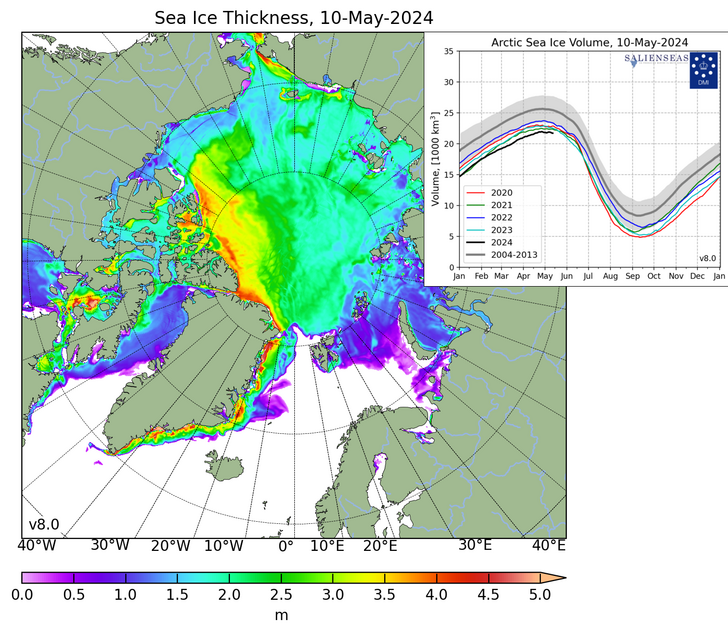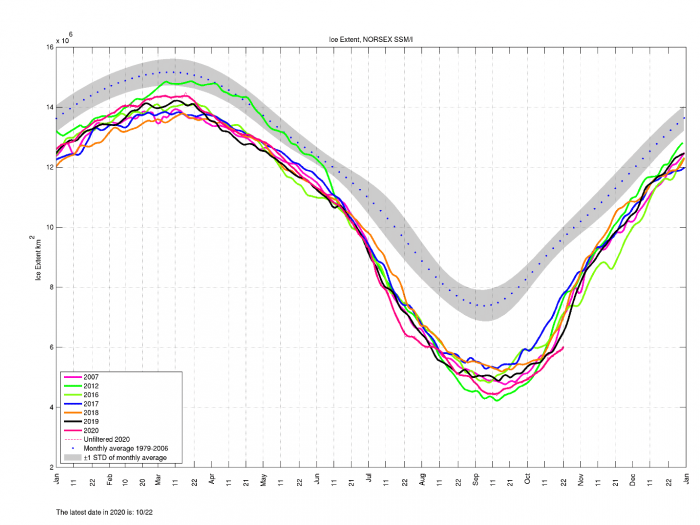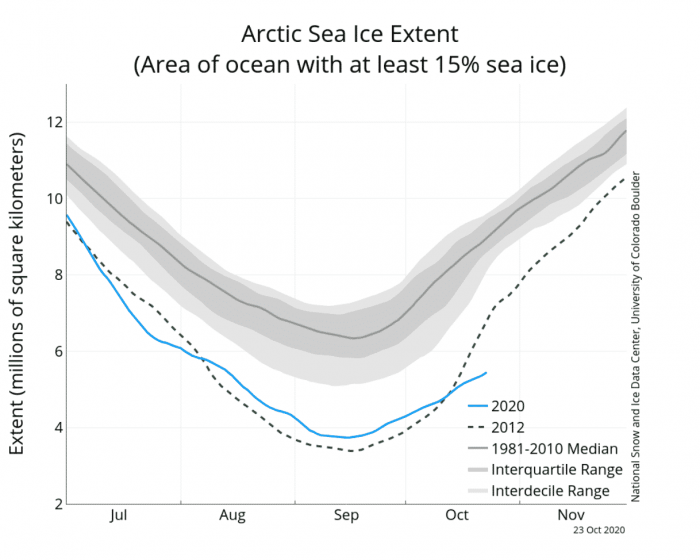I've commented on the lack of sea ice along the NSR so often in the last 18 months I'm starting to convince myself the Russians are heating their side of the Arctic basin just to keep the Northern Sea Route open and meet Putin's rather lofty targets for tonnage hauled.
Here's our preferred presentation of the sea ice situation, from Denmark's Polar Portal:

You'll note this map focuses on thickness and only incidentally on extent. This is preferred because of the way ice melts. The Danish Meteorological Institute has daily updated extent maps here.
And the headline story from Severe Weather Europe, October 26:
Arctic sea ice melt season usually lasts from March till September. After reaching the minimum extent in September, sea ice starts to grow back in October. But this year, the growth is much slower than last year, with almost no growth in some places. How did this unusual situation happen and can it mean something for the weather towards Winter 2020/2021?
THE ARCTIC ICE GROWTH
The Arctic sea ice seasonal cycle can be seen in the image below from the Arctic-ROOS system. It shows the Arctic sea ice extent change over a year. The melt season usually starts in March, after the peak ice extent is reached, lasting all the way to September. The graph shows the last few years of data, where we can see the 2020 Arctic ice extent was second-lowest, only behind 2012, which still holds the record for the lowest ice extent since measurements began.
But comparing 2012 and 2020, we can see that this year we are also setting a new record, as the Arctic sea ice is not recovering as expected. The sea ice is refreezing back, but at a much slower rate than normal, meaning that some areas are severely falling behind.
That is even more evident when we look at the comparison of all the years since the active satellite observations began in 1979. This year we observed the second-lowest Arctic sea ice extent on record. But because of the unusually low ice growth in October, the current ice extent is now the lowest for any October in the past 41 years....
....MUCH MORE
It's a bit slow to get going but about halfway in you'll see why it's linked.
Very well done.

